- The church of your childhood children went a line to the high-class. And that was the last place when Carl-Gustaf held concerts.
- The retirement home your Carl-Gustaf often took, first to his mother and in adolescence as a temporary residence. Perhaps this seed was sown to his life course?
- The orphanage half a mile south.
- Down the hill school where he entertained his comrades.
 Last maid Alma Samuelsson from Utby Mellangård in Hjärtum descends on March 31, 1916, with a son baptized to Karl Gustav. Any father is not listed in the birthbook. Alma gets a job at the retirement home. For a poor woman to bring a child to a living among the elderly do not go, so Karl Gustav is placed in the children’s home. It works like a daydreaming day because the boy is often with her mother and gets a good nursing. It is noticeable because he is better dressed than the other children. Older ladies were charmed by the little lintot who already knew how to behave well.
Last maid Alma Samuelsson from Utby Mellangård in Hjärtum descends on March 31, 1916, with a son baptized to Karl Gustav. Any father is not listed in the birthbook. Alma gets a job at the retirement home. For a poor woman to bring a child to a living among the elderly do not go, so Karl Gustav is placed in the children’s home. It works like a daydreaming day because the boy is often with her mother and gets a good nursing. It is noticeable because he is better dressed than the other children. Older ladies were charmed by the little lintot who already knew how to behave well.

Orphanage
The foundation for the newly built children’s home came from Hulda Mellgren, who was fortunate enough to manufacture snuff in Gothenburg, buying the Sollum farm north of the church. The purpose of the donation was of children maintained by the parish would eliminate the poor host’s poor influence on the retirement home. Now stranger manager Anna Johansson sprang her tears and reproach in about ten youngsters.
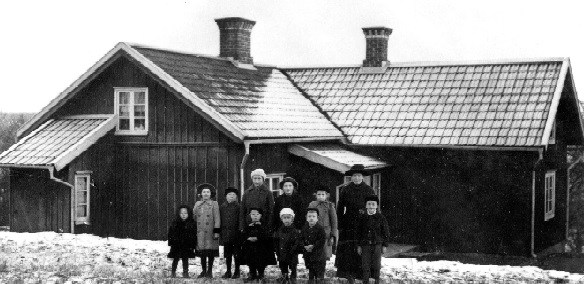
The children’s home manager Anna Johansson grew the children after her courage and admonition. On Sundays, Miss Johansson led the flock to the church. Warm summer days also to swim in Sollumsån or Lake Lille Väktor in the marshes. ”We knew them all well, my siblings and I, from meetings on the roads around the village and the annual Christmas calendars,” writes Bengt Wallerius, Svingel’s friend since the children’s years in the Hometown Association’s 1982 annual report.
The children’s home lay on land belonging to the farm Hjärtum Övra, southeast of the cemetery. Here from the heights, the children of the home had views of the fertile fields down the valley, next to the river with all the skirts. The elderly broke down to working conditions at farmers in the valley of the river. Child labor, such as potato pie and pomegranate, were the day’s sports days in city schools.
”At the top of the parental social scorecard stood the church leader and the riksdagsman Wallerius. The children Bengt, Göran and Stina became Gustav’s best friends illustrating his social talent. They bathed and fished in the river. In winter they ski up towards Bredfjället and drove the hill down the river towards the river. In the games he gladly took the command and was happy to write in the center, Bengt Wallerius writes in the Hembygdsföreningens 1982 annual book.
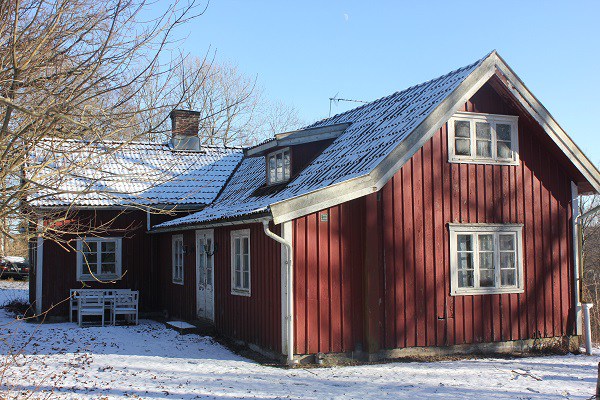
The imprisonment of the school’s estrader
”Throughout his childhood, he had existed with invective bastard over in a harsh and judgmental time and this has in him created the trauma does not become less of that in adult life came to hang out with everyone who had families behind them” remember Wallerius.

Perhaps these memories created ties to Willy Brandt, who grew up without a father in Lübeck. Being excited did not prevent Gustav from happily lead his peers. The song star and a lively imagination helped him become the class’s estuary, first under Armida Andersson in the small school and then to Carl Johan Leuchovius. ’

Imitations of people in the parish went home. The paradise in addition to gala as a tupp is to mimic Gustav V’s christmas. He executed the majesty crime. It was not without his noble bar of barracks tracing the royal era of time.
 Someone even thought that Karl Gustav resembled Gustav V. Gossen played played with and made no objection to seeing him be the son of the king. That there were two other likely fathers in the village did not kill the rumor. Nor did it take just seven months between birth and the king’s visit to Uddevalla August 31, 1915 – which seems to have been the only king visit in the landscape that summer.
Someone even thought that Karl Gustav resembled Gustav V. Gossen played played with and made no objection to seeing him be the son of the king. That there were two other likely fathers in the village did not kill the rumor. Nor did it take just seven months between birth and the king’s visit to Uddevalla August 31, 1915 – which seems to have been the only king visit in the landscape that summer.
 There the king opened the Karl-X statue on the square and then visited the regiment where it was alleged that Alma Samuelsson worked. When Svingel later became questionable about his royal birth, he used to answer ”they say it”.
There the king opened the Karl-X statue on the square and then visited the regiment where it was alleged that Alma Samuelsson worked. When Svingel later became questionable about his royal birth, he used to answer ”they say it”.
”It was forward he wanted to, it was your most strive. He wanted to go for a class trip, get out of bed like taken care of at the children’s home, ” writes Wallerius. ”He must have sealed himself like a stranger in the countryside, who did not know his place in the social order. That he did not want to do it created a certain irritation, perhaps reluctance, but Gustav was tough, not only in the physical respect ” .
His dream of becoming a priest he soon had to give up, not just for the sake of the economy. For some headlight in school he was not according to comrade Wallerius.
After the confirmation, Gustaf got a boy on the farms in the parish. Hard work broke his back so he was placed in a gypsum form on the child’s wind. Possibly he made a tailor and therefore he was sent for training at Vanföreanstalten in Gothenburg.
old people’s home
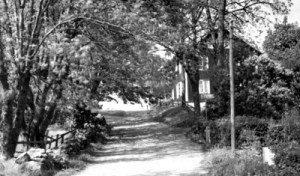 The summer act he spent in Hjärtum, provisionally housed in a room in the retirement home when it was not necessary for the receptionist’s reception.
The summer act he spent in Hjärtum, provisionally housed in a room in the retirement home when it was not necessary for the receptionist’s reception.

Despite the age difference, Gustav and home manager Jenny Andersson became good friends – and maybe more than that. In the fifties, he came to his white Porsche every summer in order to greet her at Hjärtum, until she retired in the western hemisphere in 1963. (Two candlesticks in the church, donated in 1962, is a memory of her).
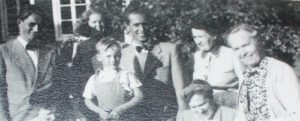
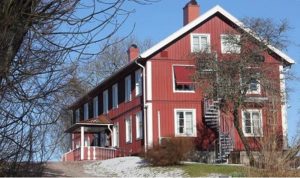
Church
It came to pass that the comrade’s throne, where the priest’s son was in, slammed the church to play the organ and hear Gustav’s baritone. The song star had been discovered at Vanföreanstalten. For a couple of years, someone paid for singing lessons from singer Elof Benktander at Stora Teatern. Who this one is, you do not know. Who did Gustav join in Gothenburg in addition to the comrades from Hjärtum? There are threads to be found in for those who penetrate into his later fate.
Svingel played Erik in fifteen performances of the Värmlänningarna in Stockholm operation between 1947 and 1951. On the same scene, Nicolai Gedda 1952 debuted in Postiljonen from Longjumeau. Librettot is written by his time Björn Ulveus, Adolphe de Leuven, Paris. The postillion premiered in 1838 at the Royal Opera, just over forty years after Adophe’s father, Adolph Ribbing, participated in the murder of Gustaf III.
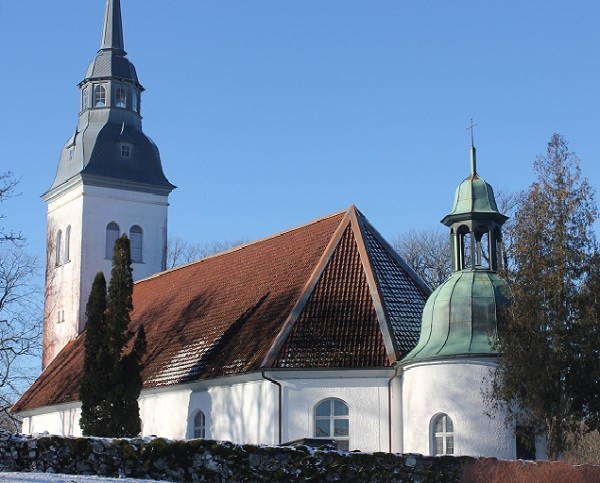
Adolph de Leuvens grandmother. Eva Löwen, is under the sarcophagus outside the church. Hjärtum historian Lars Manfred Svenungsson writes in Hjärtum- Västerlanda Inlands Torpe Härshistorik:
”At the cemetery, just outside the Sacristian church is a large stone list of soapstone that had its place in the grave before 1900. By himself, it owns another chest of a Macklean family member, Colonel Rutger Macklean. The sarcophagus distinguishes the place, where before the choir’s demolition in the same chests kept, as embedded balsamed remains of the genera Macklean (Macklier), Ribbing and Bennet to Ström, in a common tomb containing about eightteen chests, are grounded. All of these were previously assembled in the narrow grave … ”

Margareta Wallerius , spouse of Swing’s youth mate Göran, donated to a bust of Manfred Svenungsson, placed between the church and the retirement home. The place is well chosen because here was the battle at Hjärtum in 1657 when a Norwegian here chased away the Swedish intruders.

On the church pulpit, two candle holders are donated by the retirement home manager Jenny Andersson, who Svingel visited until she retired in the early 60’s. The church was always full when Carl-Gustaf Svingel had concerts in the 40’s and in the 50’s. It told Gunnar Karlsson to remember Carl-Gustaf Svingel in 1948.

.
Below the church, opposite the city school, Ella Hansson, who was a handicapped seaman, lived. The house needed to paint, and then Carl-Gustaf got up, which was 1948. Because he was angry he took help from the youngster Gunnar Karlsson (who became a carpenter and hometown scientist in Hjärtum):
”Svingel liked to make a jump so we were terribly fun,” Karlsson explains. We lasted for fourteen days for a job that a painter would certainly have done on one.
/ By Ingemar Lindmark ingemarlindmark39@gmail.com

